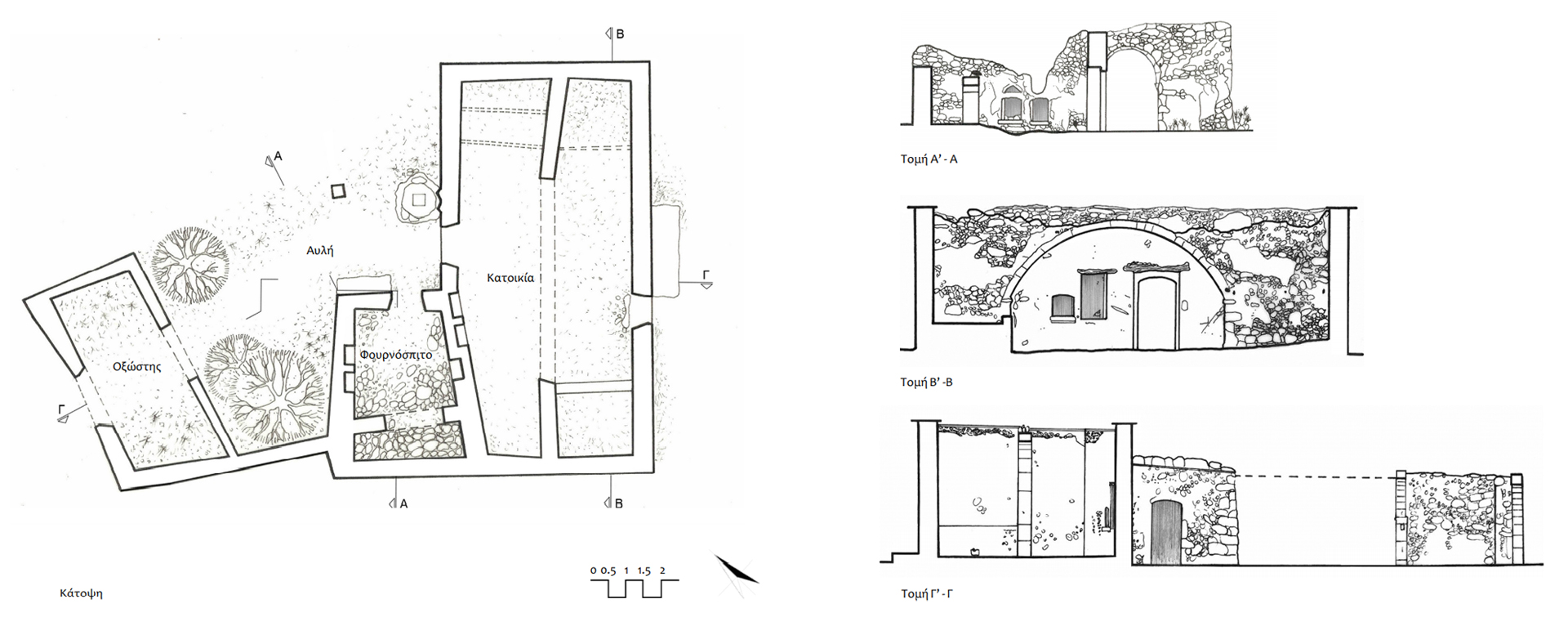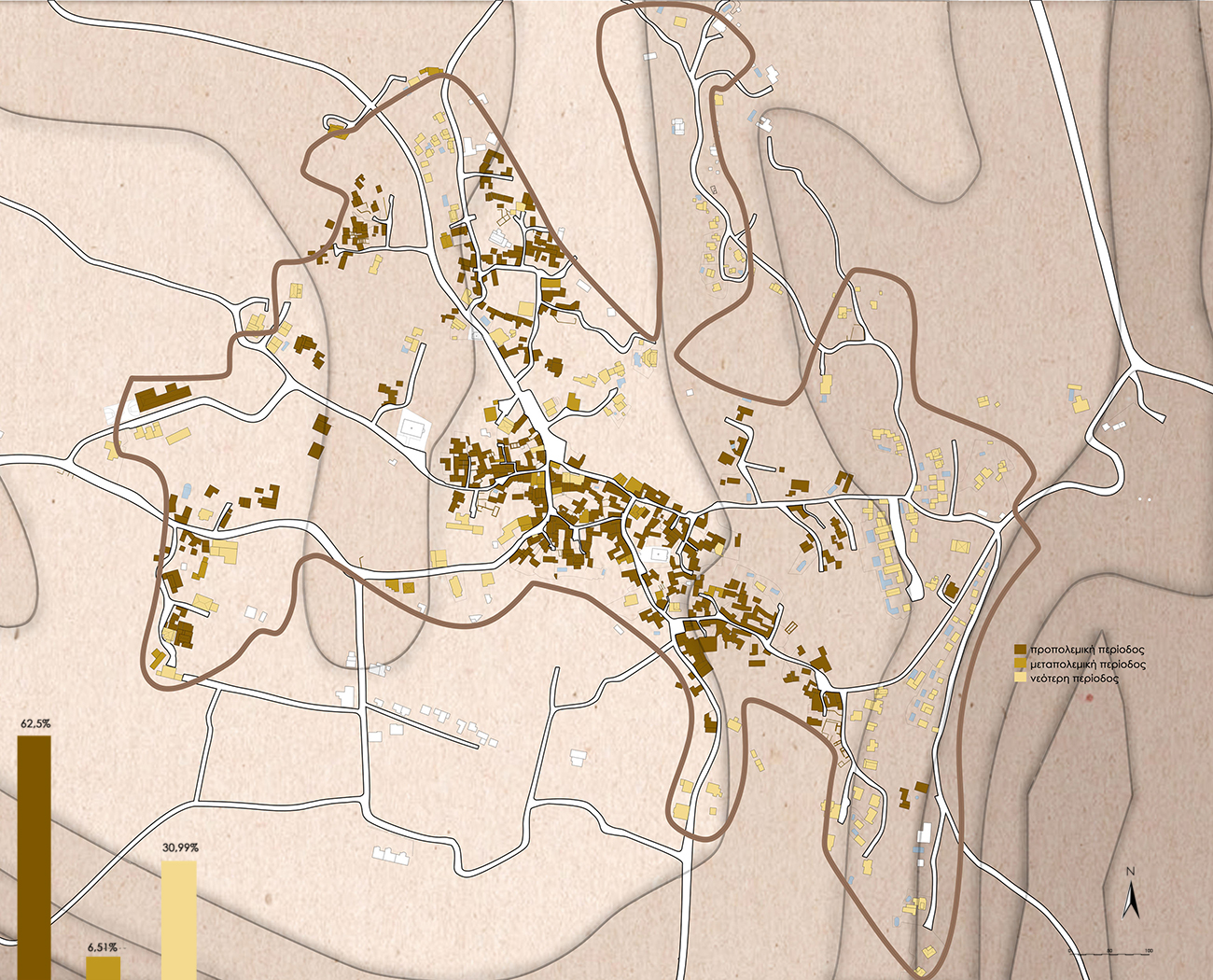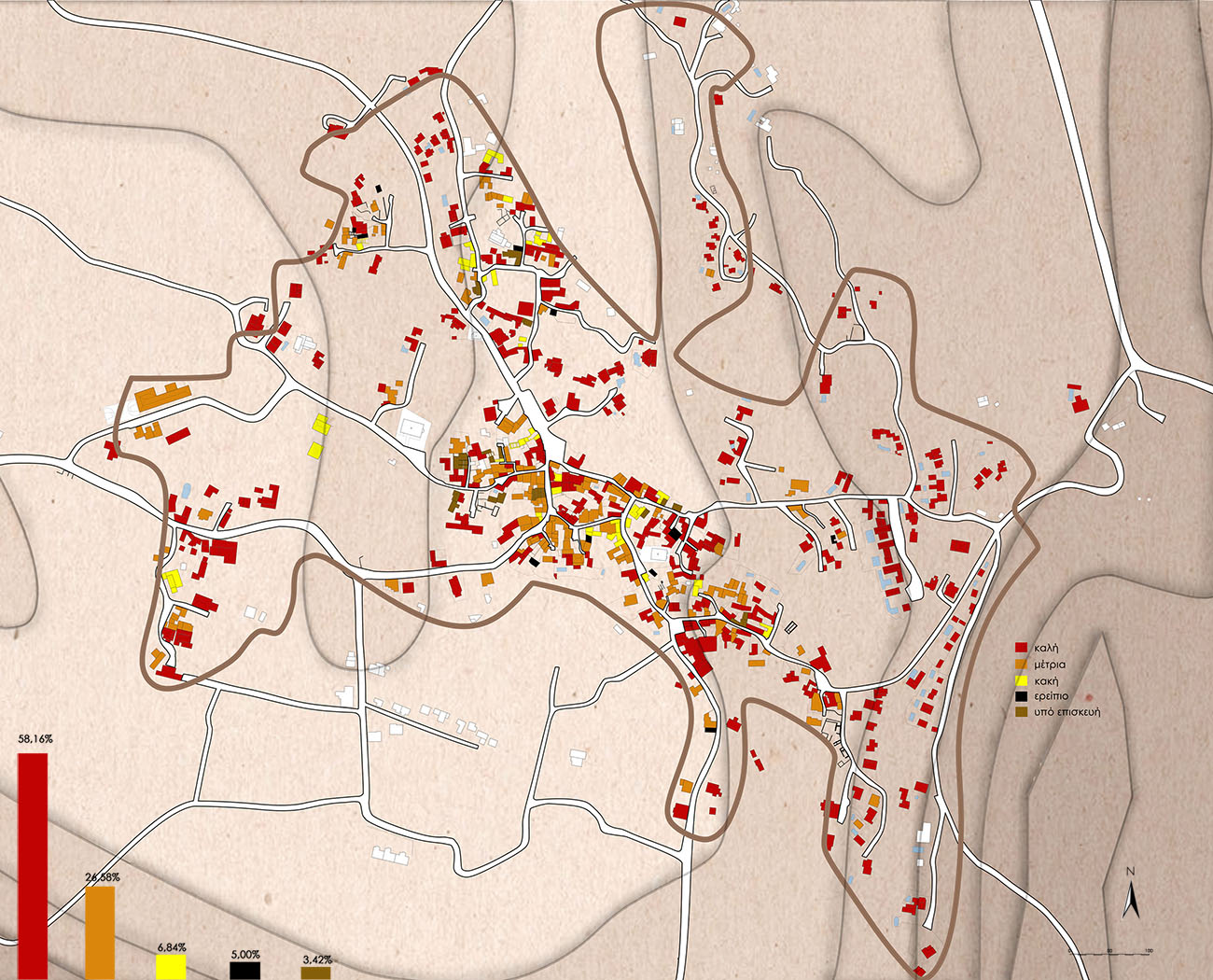The present research deals with the two-way relationship of a living-evolving settlement, which consists of a remarkable historical whole, with the modern socio-economic and cultural process. More specifically, its objects are the traditional and newer buildings of Gavalochori Chania as well as its current condition.
The settlement is part of the Municipality of Apokoronas, and its name is attributed to the Byzantine family of Gavalades, of which it was a manor, and continues to exist in the Venetian Domination. During the Turkish Domination, the area of Apokoronas revolted several times, resulting in the destruction and looting of its settlements. Therefore, today in Gavalochori there are few buildings that date back to the period of Venetian rule. Most ofthemseem to belong to the late period of Ottoman rule and the period of the Cretan State.
As its form emerged in earlier times, the streets are narrow and bordered by the walls of buildings, while there are short dead ends that end in houses. Its development took place around many different centers, so the settlement is scattered and includes a total of 18 neighborhoods, with traditional and modern buildings coexisting. The structure in the center, where one meets the older buildings, is coherent, and does not follow a single road system.
Today, the most common types of housing found in Gavalochori are two:
a) the flat roof house with an arch, usually integrated in a closed building complex with an inner patio which consists of buildings in a Γ or Π layout with a flat roof.
b) the two-storey house with a gabled roof, with an inner patio. Some of them have a balcony.
It is very common for the above types to coexist due to the expansion or remodeling of the house, resulting in properties belonging to different time periods.
The basic building material is stone in its natural state or carved. The carved stones are used alternately to form the corners of the buildings, to structure the pilasters of the openings and to build the arch, which is the most detailed construction of the Cretan house.
Another basic material is wood in its natural form, which is tree trunks. The beams, which are thick logs, are supported by special holes that have been formed on the inner sides of the walls and are placed parallel to the small side of each space. Sketches or, later, planed boards are placed on top of them. Then dry bushes are added to hold the soil. This is the key element of roof construction. Gradually the flat roof is replaced by a gabled roof and later by a thin layer of concrete, as the need for its maintenance is constant.
The mass of the buildings is arranged in a Γ or Π shape and enclose the courtyard in collaboration with the mass of the adjacent buildings. They are not placed directly on the road or only a part of them is placed. Their scale is close to human. Although the organization of the facades of the houses is characterized by simplicity and austerity, the secondary morphological characteristics of the buildings add diversity to the settlement. These are mostly openings, stairs, gutters, chimneys.
In 1980 Gavalochori was declared by the Ministry of Culture as a historic site and a landscape of special natural beauty, as it is a remarkable set of folk architecture without significant modern alterations with special interest in terms of popular culture. Apart from this context, protected monuments have been declared by Ministerial Decisions the Old Primary School, its 24 wells, the Building Complex of the Folklore Museum and the two-storey house of Fabrika. In addition, based on the Presidential Decree of 1986, special building conditions are set.
In recent decades, the settlement has a multicultural character, as it is inhabited not only by Greeks but also by foreigners, who come mainly from northern European countries.
The current condition of the buildings of the settlement is presented in the form of maps and is a result of the field research carried out. All the maps show the swimming pools, which are 61 in number. At the same time, a survey was conducted on how Gavalochori is perceived by its own inhabitants, both Greeks and foreigners. It is interesting whether these people consider its traditional image altered, but also what they consider to be the cause of this alteration.
The research concludes that the majority of the traditional houses of the settlement have not been significantly altered. However, the deformation of the traditional buildings and the existence of modern incompatibilities with the architecture of the settlement, disrupt its cohesion. Although the settlement is declared protected relatively early and the building permits require approval from the Ministry of Culture, which makes the degree of control of the settlement architecture relatively high, the situation is not ideal. The image of Gavalochori should and could be better.
The preservation and protection of the cultural heritage, and more specifically the architectural heritage of the past, is a timeless request. In the age of globalization, its preservation is the responsibility of both the state and the local community. The architectural heritage not only belongs to the cultural goods but is also historical evidence, as well as evidence of the aesthetics of the past, which should be preserved for the next generations. Especially a settlement like Gavalochori that still has a remarkable unaltered building stock of traditional architecture.
If one has to decide whether the benefits outweigh the problems created by the mass settlement of foreigners, the revival of the settlement and the intense construction activity that followed, it isn’t easy to conclude which of the two is οutweighed. What is certain is that this trend, with the appropriate state control and other actions, could have been used to have a substantial upgrade, a more effective and comprehensive protection of Gavalochori. The comparison of the image of the settlement as depicted in the photographs of the 1970s in contrast to the current image of the settlement illustrates the problem.













